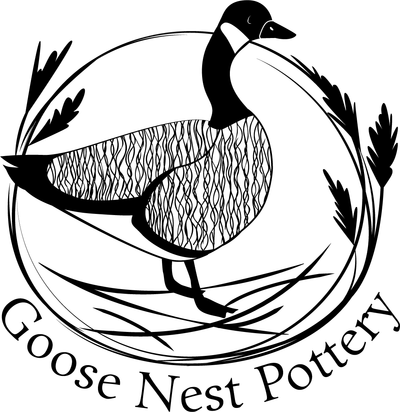The Magic of the Obvara Eye
Wednesday, February 1, 2017
Copied from my old website
Call me a snob....I think I am a little bit of an Obvara snob. I have been in search of the Eastern European Obvara Eye, as I do believe there is a magic in those eye like patterns. This gosling is getting closer to the eye pattern, and since, I have a few others that are even closer I am getting pretty excited! There are so many things you can do with ceramics, and crazy as it may be, I am trying to get the Obvara eye with some predictibility.
What’s so special about the eye pattern? Well, to start off with, when I was doing research on this process, there were a few artists in Belarus & Russia that were able to create the eye pattern with some consistency. Did they share what they do? No....and I guess I don’t blame them. If it was as easy as making a boxed cake mix....then perhaps the magic would disappear.
Next, when I researched, there were a few articles that mentioned the belief in the magic of the eye pattern. When I asked my translator if she really thought people believed in this magic, she looked at me as if I had 3 eyes. Of course Obvara ware had magic. It was written in many sites as a modern belief; it was documented on a Russian potters site as a historical belief. (this was published-but I was unable to find the book) The article showed the tools they believed were used and discussed that Obvara was explored by an archeologist. The article not only discusses Obvara, but the use of flour paste spread on new pottery before it was used in the household. To seal the ware or to bless it....the sign of the cross was drawn through the flour before the pot was baked overnight.
If people believed that vessels with this pattern (the eye pattern) protected their food from enviers eyes and that food served in this pottery always provided enough; Obvara ware could end hunger. And I do not say that mocking. I say it....with a sorta amazement. I have never been a believer of magic, but this process has me hooked.
Last thing. I found a picture of a pot in a school text book. It showed a pot from the Congo, late 18th century, perfect eye pattern. The description does not call it an Obvara pot. But it does speak of how the pot was “decorated”. And it makes sense. I could not imagine that people in medieval Eastern Europe using flour, yeast and sugar. Food was scarce. Why would you “waste” it on making pots-magic or not. Yes, it was a very similar process and it mentioned a new ingredient which I have started some new research. I’ll share the results in late summer. I have a goal to make 100 birds, and then I can start firing. All those birds should help document and answer questions.
So, is there magic in the Obvara eye? I know what I think. What do you think?
